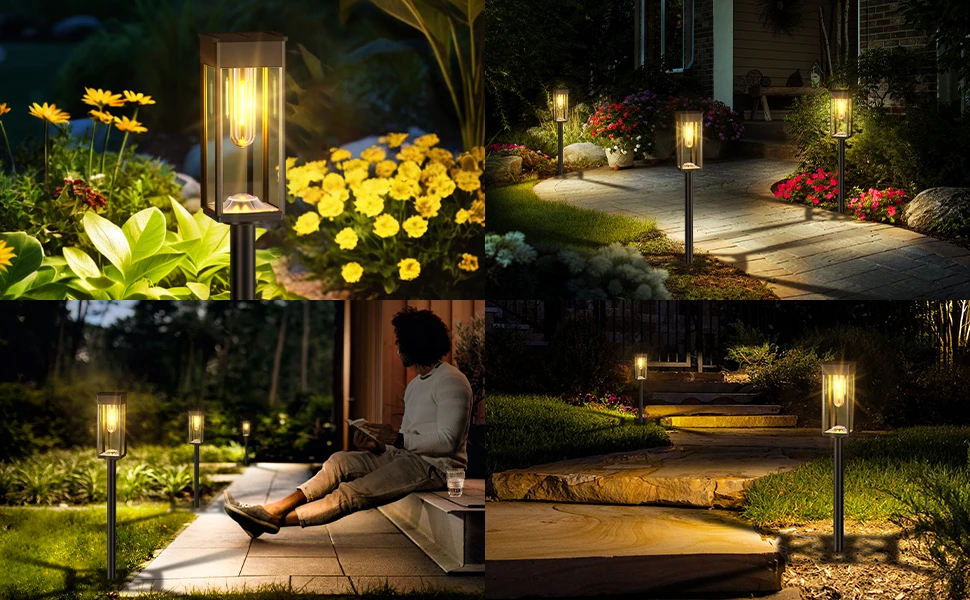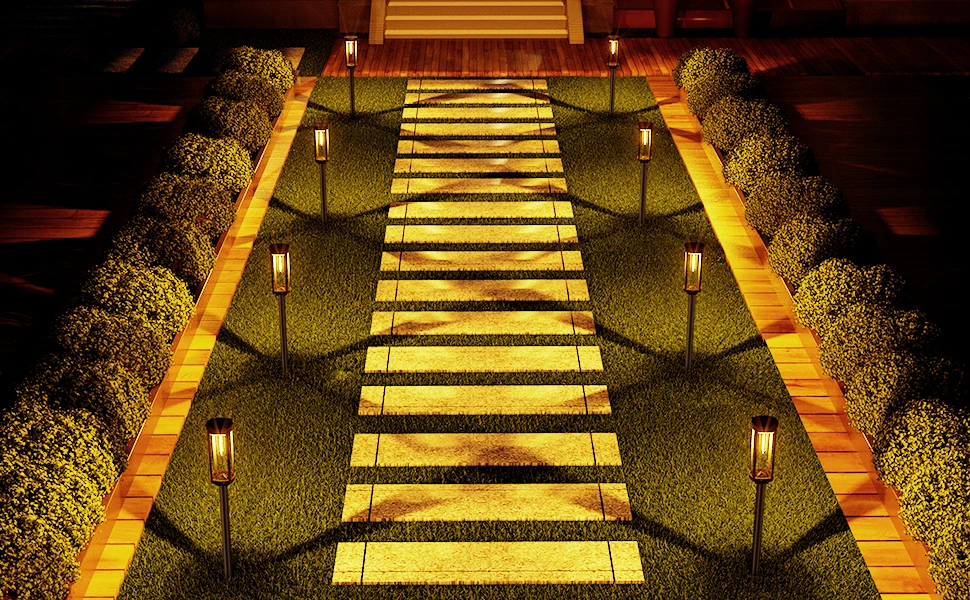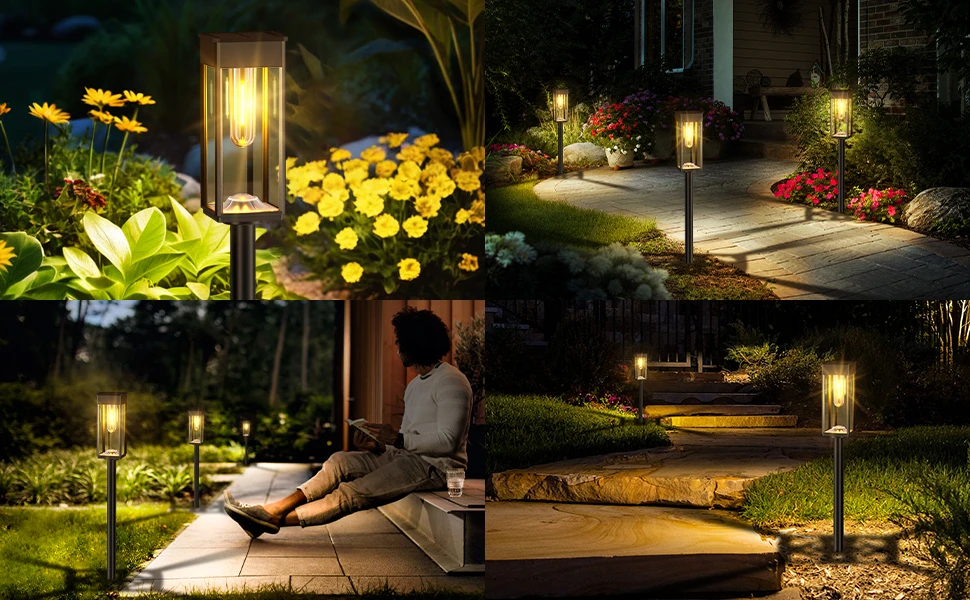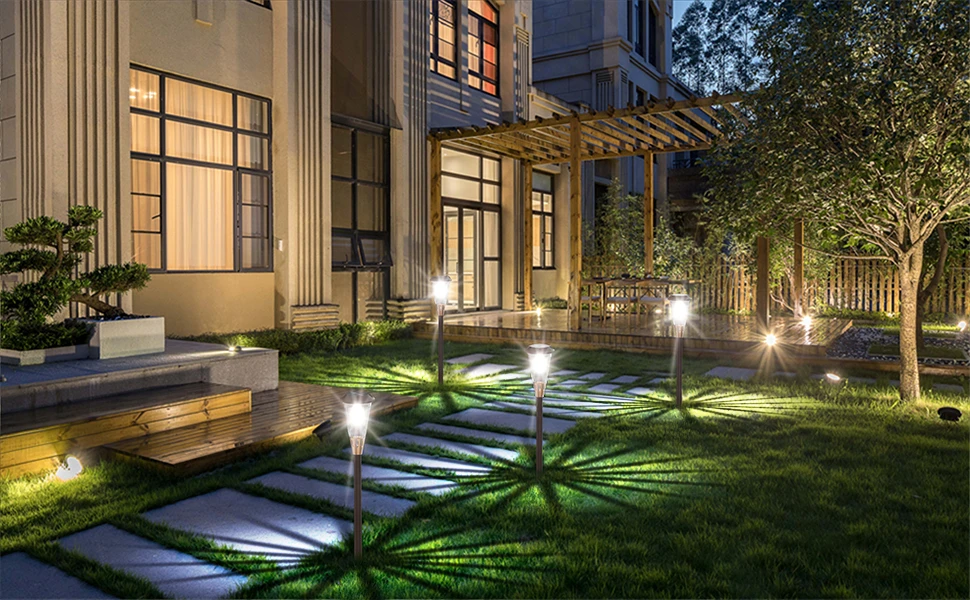Shady gardens, with their lush canopies and serene corners, offer a tranquil escape but pose a unique challenge for lighting. Traditional solar lights struggle in areas with less than four hours of daily sunlight, such as under dense trees or in the shadow of buildings, resulting in dim output, short runtimes, and frequent replacements. Enter remote panel solar systems—a game-changing solution that separates the solar panel from the light, allowing panels to be placed in sunny spots while lights illuminate shaded areas. These systems can capture 50-80% more sunlight, ensuring reliable, eco-friendly illumination without wiring or electricity costs. This article explores the challenges of lighting shady gardens, the innovative architecture of remote panel systems, and top product recommendations to transform your shaded spaces into beautifully lit havens.
Core Needs and Technical Challenges in Shady Gardens
Light Characteristics in Shady Areas
Shady gardens, defined as areas with less than four hours of direct sunlight, rely heavily on diffuse light. Traditional solar lights require at least 10,000 lux to charge effectively, but shady spots often receive under 2,000 lux, leading to charging efficiencies below 30%. This causes:
- Shortened Runtime: Lights may last less than 4 hours at night.
- Battery Degradation: Frequent undercharging reduces battery lifespan to under a year.
- Frequent Replacements: Low performance forces costly replacements.

Why Traditional Solutions Fail
- Integrated Design Limitations: Most solar lights have panels fixed to the lamp, making them ineffective in shade.
- Battery Constraints: Lead-acid or NiMH batteries degrade quickly under low charge cycles.
- Light Control Issues: Standard sensors misfire in low light, draining batteries unnecessarily.
Innovative Architecture of Remote Panel Solar Systems
System Components and Operation
Remote panel systems overcome shade limitations through a modular design:
- Remote Solar Panel: Monocrystalline or cadmium telluride thin-film panels (≥150cm²) with adjustable mounts for optimal sun exposure.
- Extension Cable: 2-core, tin-plated copper cables (impedance <0.5Ω/m) support up to 30 meters of low-loss power transmission.
- Smart Controller: MPPT (Maximum Power Point Tracking) technology achieves >95% charging efficiency, with overvoltage protection.
- LED Lights: Low-power (≤3W) LEDs with 5-12V DC input, ensuring bright, efficient illumination.
Key Technological Breakthroughs
- Low-Light Charging: Cadmium telluride thin-film panels charge in as little as 2,000 lux, unlike silicon panels needing 10,000 lux. Super-capacitors store micro-currents, enabling multi-day operation from a single day’s charge.
- Low-Loss Transmission: Shielded cables with <5% voltage drop per 10 meters ensure efficient power delivery. Cascading technology allows one panel to power 2-3 light sets, reducing costs.
Scene-Specific Solutions and Product Recommendations
Typical Application Scenarios
| Scene | Panel Placement | Light Type | Cable Length | Brightness Needs |
|---|---|---|---|---|
| Tree-Shaded Garden Path | Tree canopy edge (sunlit) | Ground stake spotlights | 15-20m | 50-100 lumens |
| North-Facing Courtyard | Rooftop or adjacent building | Wall lights or string lights | 25-30m | 20-50 lumens |
| Indoor Balcony Plants | Outdoor windowsill or AC unit | Flexible strips or mini floodlights | 5-10m | 300-500 lumens |
Top Product Recommendations
1. BITPOTT FlexiPanel Solar Pathway System
- Specifications:
- Panel: 10W flexible cadmium telluride thin-film (40% better low-light efficiency).
- Lights: IP67 waterproof spotlights (3W, 300 lumens, adjustable angles).
- Features: 15-meter cable, app-based charge monitoring, cable damage alerts.
- Highlights: Excels in low-light charging, ideal for heavily shaded paths. The app ensures real-time performance tracking.
- User Feedback: An Amazon reviewer noted, “These lights keep my shaded path glowing all night, even after cloudy days.” Some reported cable connectors needing extra sealing in heavy rain.
- Purchase Info: $40-$60, available on Amazon, BITPOTT’s website, and Home Depot.

2. Sunforce ShadeMaster Cascading Solar System
- Specifications:
- Panel: 20W monocrystalline with auto-tracking mount.
- Lights: 4-output controller powers ground lights, wall lights, or strings (100 lumens each).
- Features: 20-meter cable, patented anti-reverse connection technology.
- Highlights: Supports multiple light types, perfect for large courtyards. Anti-reverse tech prevents damage from wiring errors.
- User Feedback: A Solar Mentors tester said, “The cascading feature lit my entire north-facing yard with one panel.” Some noted the tracking mount adds cost.
- Purchase Info: $60-$80, available on Amazon, Lowe’s, and Sunforce’s site.
3. EcoCity MiniRemote Solar Camping Kit
- Specifications:
- Panel: 5W foldable monocrystalline panel.
- Lights: USB-compatible camping lights (200 lumens, dual solar/USB charging).
- Features: 5-meter cable, portable for temporary setups.
- Highlights: Compact and versatile for balconies or camping, with USB backup for cloudy days.
- User Feedback: A reviewer praised, “Perfect for my shaded balcony plants—easy to move!” Some found the short cable limiting for larger setups.
- Purchase Info: $25-$35, available on Amazon, Walmart, and EcoCity’s site.
Installation and Optimization Guide
Panel Deployment Principles
- Orientation: Face panels south (Northern Hemisphere) or north (Southern Hemisphere) with a 15° westward/eastward tilt for maximum sunlight.
- Height: Install at ≥2 meters to avoid ground shadows from shrubs or grass.
- Angle Adjustment: Use 30° tilt in summer and 60° in winter to match sun angles.
Cable Routing Techniques
- Concealed Installation: Embed cables in tile gaps with waterproof tape or hide under climbing vines like ivy for aesthetics.
- Waterproofing: Use heat-shrink tubing and silicone seals at connections; add drainage holes at cable low points to prevent water buildup.
System Testing Steps
- Panel Voltage: Verify ≥18V (12V system) in sunlight.
- Light Response: Cover the panel; lights should dim or turn off within 30 seconds.
- Runtime Test: After a full charge, disconnect the panel; lights should last ≥10 hours.

Maintenance and Efficiency Strategies
Routine Maintenance Checklist
- Panel Cleaning: Monthly, use a soft cloth and mild detergent to remove dust or bird droppings.
- Cable Inspection: Quarterly, check for wear or loose connectors.
- Battery Health: Annually, measure internal resistance with a multimeter (>500mΩ indicates replacement needed).
Efficiency Optimization Tips
- Winter Mode: Adjust panel tilt to 60° and enable “low-temperature boost” (10% higher charging voltage) on controllers.
- Cloudy Weather: Use “pulse charging” mode to capture intermittent light.
- Shade Mapping: Use apps to track shade patterns and reposition panels dynamically.
Future Trends: Wireless and Smart Upgrades
- Wireless Power Transmission (WPT): Emerging magnetic resonance tech enables cable-free power delivery within 5 meters at 70% efficiency, reducing installation complexity.
- AI Light Management: Machine learning predicts shade patterns, adjusting brightness and panel angles for optimal performance.
- Integrated Storage: Compact lithium iron phosphate batteries support 72-hour operation in continuous cloudy weather, enhancing reliability.
Conclusion
Remote panel solar systems, like the BITPOTT FlexiPanel, Sunforce ShadeMaster, and EcoCity MiniRemote, redefine lighting for shady gardens by capturing sunlight from unshaded areas, delivering zero-cost, wire-free illumination. To start, measure your garden’s daily sunlight with a light meter or app, then choose a system based on cable length needs (5-10m for small setups, 20m+ for larger ones). These solutions ensure vibrant, reliable lighting in even the shadiest corners. Share your #ShadyGardenGlowUp stories or questions in the comments, and join our community to win a chance at trying these innovative lights!


Leave a Reply